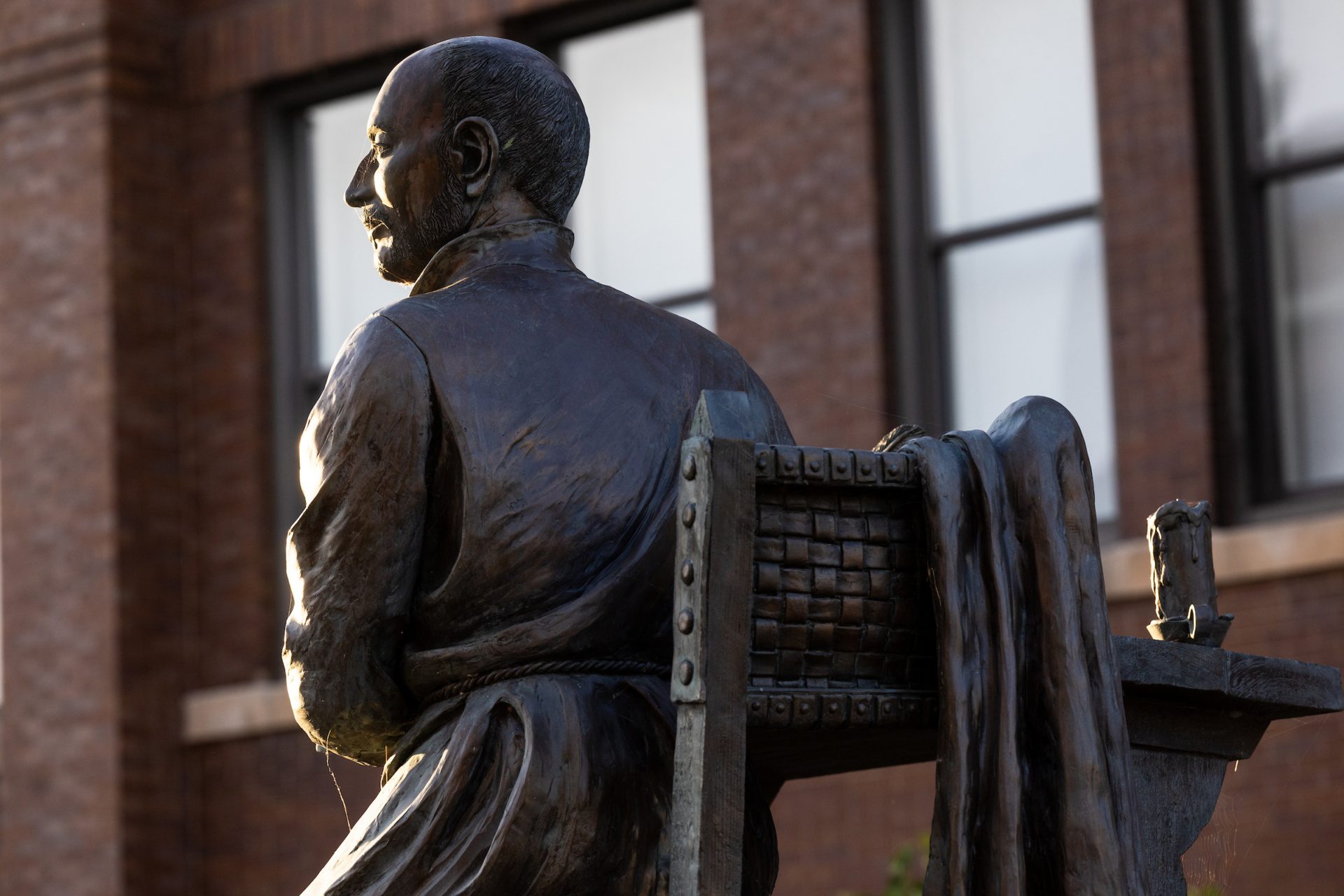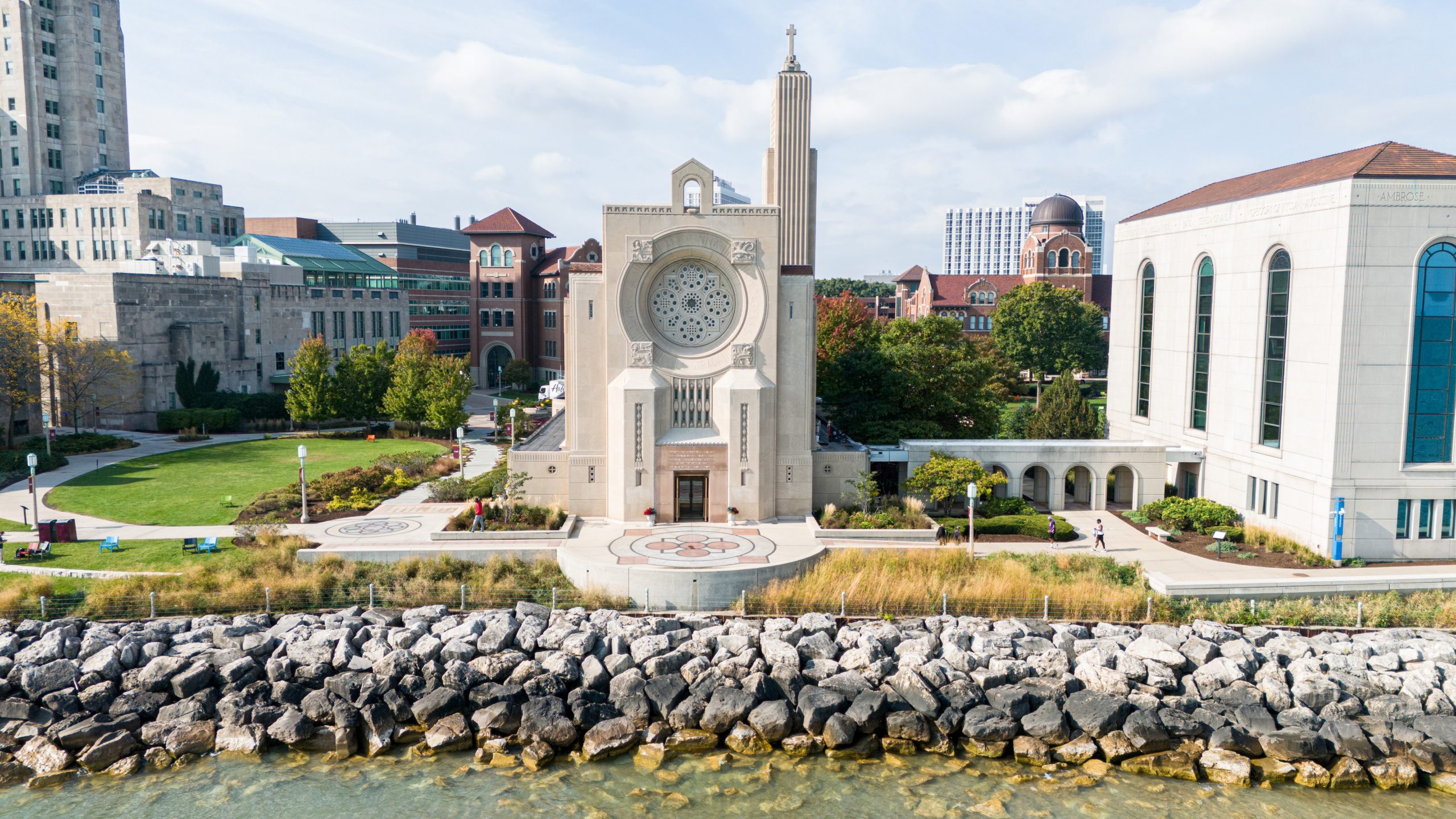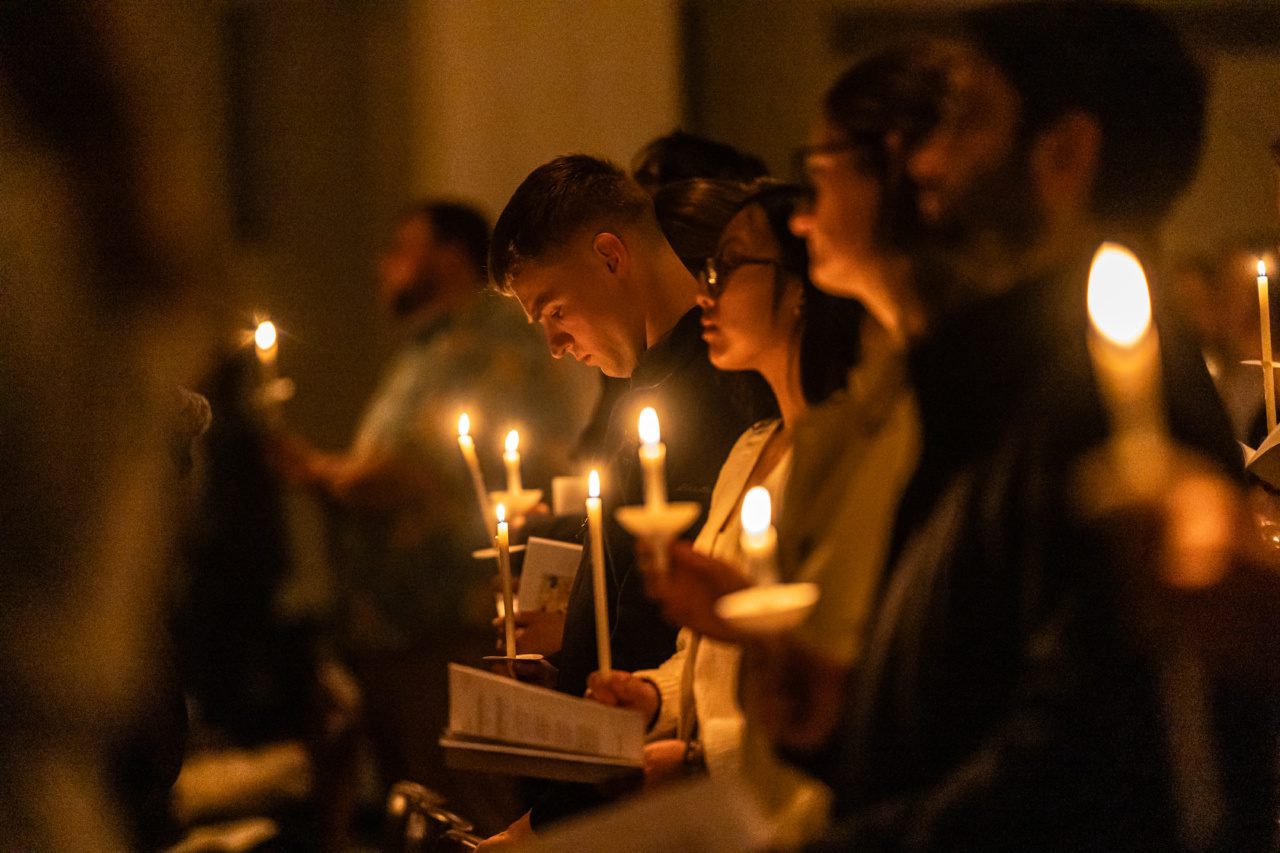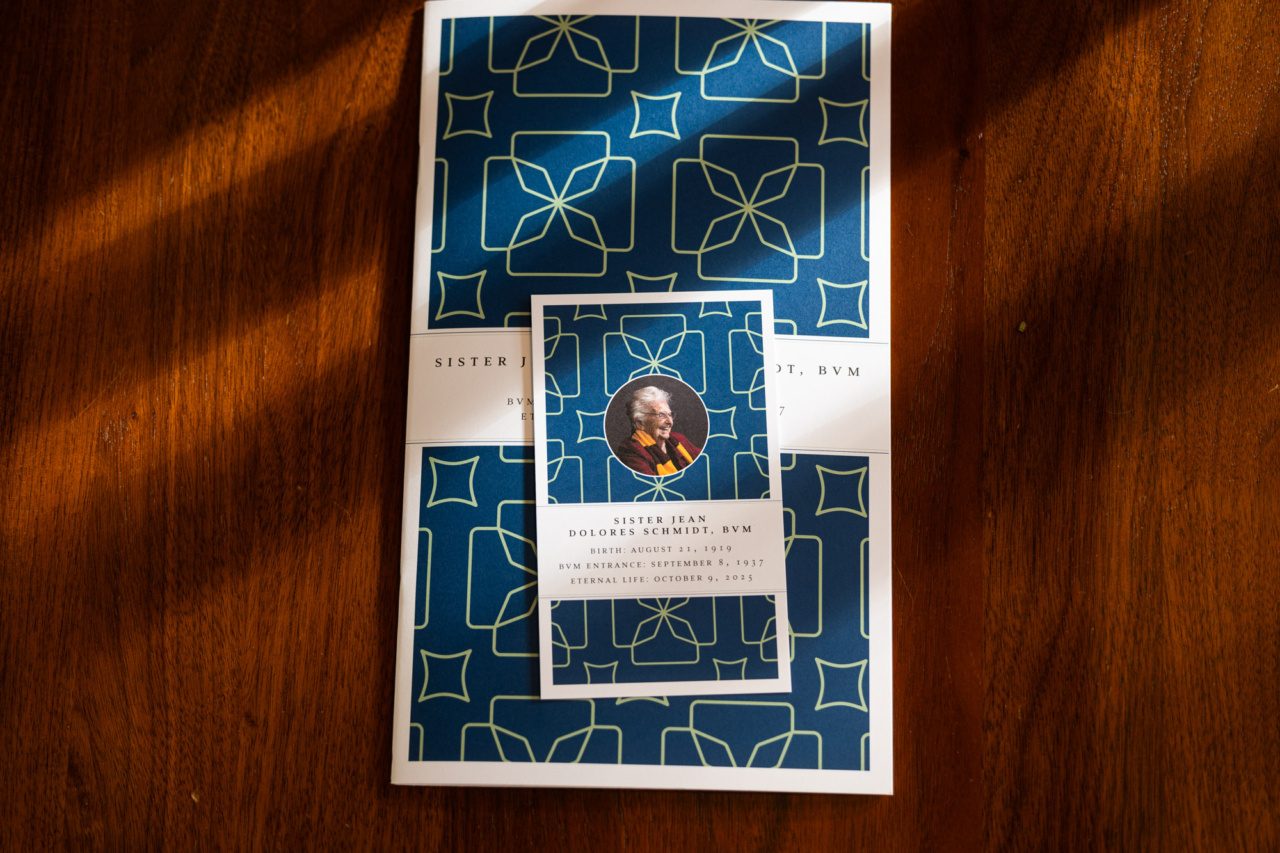
“The Jesuits are basically a dorm room experiment that comes out of the college digs of the University of Paris in the 1530s.”
So says Michael Murphy, director of the Loyola University Chicago Hank Center for The Catholic Intellectual Heritage. His account of the Catholic religious order founded by St. Ignatius, while a bit off-the-cuff, is true in its essence. Ignatius and six of his college friends established the Society of Jesus in a chapel in Montmarte in 1534, professing religious vows of poverty and chastity and dedicating themselves to God and “the betterment of souls.”
St. Ignatius was an interesting figure, to say the least. Born in the Basque region of Spain as the youngest son of a nobleman, he spent much of his early life as a soldier and courtier. However, after he was struck by cannonball while defending a castle in Pamplona, his life took a sharp turn. Bedridden at his family’s home in Loyola for months, he found solace in two books: The Life of Christ by Ludolph of Saxony, a Carthusian monk; and the Flowers of the Saints by William H. Weale. Later, he laid his sword at the foot of the Black Madonna at Montserrat near Barcelona and committed himself to a life serving God and others.
“His past life left him feeling empty. And he starts imagining these stories about the saints, and that leaves him feeling renewed and full,” says Joe Vukov, an associate professor of philosophy and associate director of the Hank Center. “He considers it a sign that he has to abandon this old life. So he starts the Society of Jesus.”
One thing that makes Loyola distinctive is that we measure success not only by factors like where our students wind up in their careers or financially, but the extent to which our students are servants of other people.
— Joe Vukov, associate professor of philosophy and associate director of the Hank Center for the Catholic Intellectual Heritage
St. Ignatius and his companions, who called themselves “friends in the Lord,” traveled widely, preaching their ideas and attending to the poor and sick. In 1540, Pope Paul III granted them official recognition as a religious order in the Catholic Church.
Today, the Jesuit religious community has 16,000 members around the world and is active in 28 colleges and universities and dozens of high schools and primary schools in the United States. Many of the mantras that give shape to the community find their roots in a set of spiritual reflections St. Ignatius recorded while living in a cave in Manresa.
Other aphorisms came later, Murphy says, culled from the thousands of letters St. Ignatius wrote, charter documents of the Jesuit founders, and priorities, or “carisms,” that express key principles of Jesuit theology. Over the past century, these ideas have been interpreted and further articulated in meetings of the General Congregation, the highest governing authority of the Society of Jesus. “That’s how the church works,” Murphy says. “It’s not all made up there in the Bible. It’s a living tradition.”
Loyola Today spoke with Murphy and Vukov for a deeper look at some of the key terms that have come to define Ignatian theology.
Cura personalis
In Jesuit tradition, the Latin phrase cura personalis is interpreted as “care for the whole person” and signifies a deep, holistic concern for others’ well-being.
“It’s the care of the whole person, obviously, but I think there are ways of talking about it, which are not necessarily distinctively Jesuit,” says Vukov. “Lots of liberal arts colleges might say something like this. What’s helpful is to think about cura personalis in the background of the Vatican document, ‘Dignitas Infinita.’”
Approved by Pope Francis in March 2024, the doctrinal text recognizes that “every human person possesses an infinite dignity” and affirms the Church’s commitment “to the weak and those less endowed with power.”
“If I talk to a student as someone who bears infinite dignity, then what’s that going to lead me to?” Vukov says. “It’s going to lead me to treat them in a very different way than if they’re merely a name on my roster or somebody who needs a job or somebody who is worried about their grade.”
Finding God in all things
At the core of Ignatian spirituality is the idea that people can encounter God in everyday experiences, not just religious settings.
“From a Jesuit, Catholic perspective, we can find God in nature, we can find God in literature, we can find God in the arts, we can find God in the sciences,” Vukov says. “And it doesn’t need to be the science of theology or Catholic literature. In the created order, we’re capable of finding God in these places, too, as well as in our fellow human beings.”
The notion of finding God in all things is not unique to Catholicism. The 13th-century Sufi poet and mystic Rumi wrote prolifically about the presence of the divine in ordinary things. “If in thirst you drink water from a cup, you see God in it. Those who are not in love with God will see only their own faces in it,” he writes.
The Ignatian interpretation has a more direct connection to the Catholic understanding of the sacrament as a visible symbol of God’s grace.
“In the Catholic imagination, the incarnation is central—the idea that God becomes a person in Jesus. And when God condescends or comes down to us, creation is, in turn, lifted up,” Vukov says. “Catholics pay especially close attention to engaging with the church through the sacrament: receiving the Eucharist and going to confession. Those practices illustrate an understanding of God coming very literally into the world and opening up the world for us to find God there.”

Magis
Magis, the Latin term for “more,” refers to the pursuit of excellence in service of the greater good. “So when we do things, we want to do them particularly well,” says Vukov. “One aspect of Jesuit education and the Jesuit attitude is that we don’t want to go for B-grade stuff. We want to strive for excellence in all that we do.”
Still, as Regis University professor Fr. Barton T. Geger, SJ, writes in What Magis Really Means and Why It Matters, magis also implies a level of intentionality in the actions we take. Examining how our energies can be best directed to leave the broadest possible impact is an important part of the Jesuit conception of magis.
“In 2011, for example, I was speaking to the faculty of a high school about Ignatian spirituality when a teacher raised his hand,” Geger writes, recalling his experience at the school. “‘I want to serve the magis, I really do,’” the teacher said. “‘But I have small kids at home. I can’t give any more without burning out.’ Clearly the poor man thought he was supposed to be working harder than he already was.”
The takeaway is that magis isn’t about working yourself to exhaustion. It’s about channeling your faculties toward worthy, socially minded causes that benefit humanity.
People for and with others
In 1973, Pedro Arrupe, then the superior general of the Society of Jesus, spoke to the 10th International Congress of Jesuit Alumni of Europe in Valencia, giving voice to the phrase “men for others.” During the speech, Arrupe, who founded the Jesuit Refugee Service, advocated for a stronger emphasis on the promotion of justice and liberation of the oppressed within Jesuit education. Today, the mantra has evolved to the more inclusive, “people for and with others.”
Arrupe’s commitment to service stems from his lived experience. After being ordained, he served as the Master of Novices at a Japanese mission in 1945, where he and his fellow Jesuits witnessed the atomic bomb being dropped on Hiroshima. “They were in Nagatsuka, 3 miles from the hypocenter of the atomic bomb. And they feel the effects of the bomb up the hill. Everybody’s running away. And where does he go running? Toward the fire,” Murphy says. “So they start a hospital at the novice house. And he spends his time treating radiation sickness for a while.”
Arrupe’s call for Jesuits to be “people for and with others” is an animating force at Loyola, where an estimated 90 percent of students are engaged in service learning.
“One thing that makes Loyola distinctive is that we measure success not only by factors like where our students wind up in their careers or financially, but the extent to which our students are servants of other people. There are a lot of opportunities for students to get involved either through curricular programs, student clubs, or Campus Ministry. That’s crucial, and I think that’s what this principle is getting at,” Vukov says.
Service of faith and promotion of justice
This Jesuit mantra grew out of the 32nd General Congregation of the Society of Jesus and coincides with a push inside the Catholic church to grapple seriously with the liberation theology movement emerging in the Global South. “This becomes a big deal because some leaders within the Vatican were concerned the Jesuits were advancing a leftist ideology. But no, the idea is no more communist than Jesus. The Acts of the Apostles says, in essence, faith is one thing, but are we all going to rest comfortably on our private faith? What about faith and justice?” Murphy says.
Core to the idea is that people are treated with equal dignity, regardless of their income, sex, race, ethnicity, religion, or immigration status.
“And it was kind of a deficient theology to claim, ‘If you suffer in this life, you’ll have liberation in heaven.’ Now, there is a precedent there. In the New Testament, we hear, ‘Blessed are the meek, for they shall inherit the earth.’ But in this case, the church was saying, ‘No, the poor have earthly rights as well.’ And to neglect that is a violation. They’re entitled to justice,” Murphy says.
The notion of finding one’s calling, which comes out of the Jesuit tradition, is at the heart of spiritual discernment.
— Joe Vukov, associate professor of philosophy and associate director of the Hank Center for the Catholic Intellectual Heritage
Ad Majorem Dei Gloriam (A.M.D.G.)
Ad Majorem Dei Gloriam, the Jesuit motto, means “for the greater glory of God.”
“Traditionally, if you went to a Jesuit high school, you’d sign AMDG at the top of your paper, no matter what you’re writing on,” Vukov says. “I think that idea really captures the overall spirit of AMDG. Even if you’re writing a paper on the Industrial Revolution or you’re compiling an analysis of Greek sculpture, you can offer that intellectual exercise to the greater glory of God.”
Unity of heart, mind, and soul
Murphy describes the Ignatian principle of unity of heart, mind, and soul as a spiritual aspiration. “When you move toward unity, the various aspects of yourself, your vehicle through the world, are pointed in the same direction. It’s a sign of spiritual maturity and development that your heart is aligned with your mind and soul. You’re not divorced from yourself,” he says.
By way of illustration, he referred to the instructional foundations of a course called “All Things Ignatian: Living and Learning in the Jesuit Tradition,” which he created in 2013 with Rev. Mark Bosco, S.J., now the vice president for Mission and Ministry at Georgetown University.
“The word Catholic itself is a Greek term,” Murphy says. “It means seeking after or accounting for the whole. So the “h-o-l” in Catholic has a similar etymology to the word holistic. The core of this principle is to have harmony. And St. Ignatius was all about that. Why did he care about the spiritual exercises so much? Because he found disharmony in his life. So what’s the goal? To have harmony. To achieve a certain kind of unity.”
Discernment
Discernment is the Jesuit practice of learning how to locate and follow your internal desires. “We all have desires, and some of them are going to serve us well, and some aren’t,” Vukov says. “But, ultimately, God calls us through our desires, and part of our call is to learn how to evaluate those desires and which ones to follow. It goes deeper than secular approaches to decision making, which often rely on weighing pros and cons. Instead, it interrogates existential questions: “What are my deepest desires? Who is God calling me to be?” he says.
Several years ago, he added, the late Sister Jean, a former chaplain and academic adviser at Loyola, gave a video blessing at Loyola’s 2021 commencement ceremony, in which she invoked the idea of being “called to act.”
“The notion of finding one’s calling, which comes out of the Jesuit tradition, is at the heart of spiritual discernment,” Vukov says. “The idea is also present in St. Ignatius’s writings, in which he discusses discerning the spirits and God’s movement in his life.”
Spiritual exercises
The spiritual exercises are one of the lasting legacies of St. Ignatius. A compilation of meditations, prayers, and contemplations he composed between 1522-1524, the first edition of the Spiritual Exercises were published in Latin with Pope Paul III’s approval. Intended as a guidebook for spiritual directors, they “rely heavily on imagination, which is a big part of Ignatian spirituality: the idea that Christ can meet us in our imaginations,” Vukov says.
“For instance, if we read through the nativity, St. Ignatius will ask us to imagine the smell of the hay in the stable, and what it sounded like in first-century Bethlehem. So the spiritual exercises are really trying to engage our imaginations as a way to enter into scripture or to enter into prayer,” Vukov says.
Traditionally, a Jesuit practicing the Spiritual Exercises would engage in a silent, month-long spiritual retreat. Today, the 19th Annotation allows you to spread the exercises across several months. Loyola’s Campus Ministry offers a Spiritual Exercises in Everyday Life (SEEL) program for students, staff, and faculty interested in engaging with Ignatius’s text. Participants commit to 45 minutes of personal daily prayer and receive spiritual direction from an adviser.
Read more stories from the Hank Center for the Catholic Intellectual Heritage.



